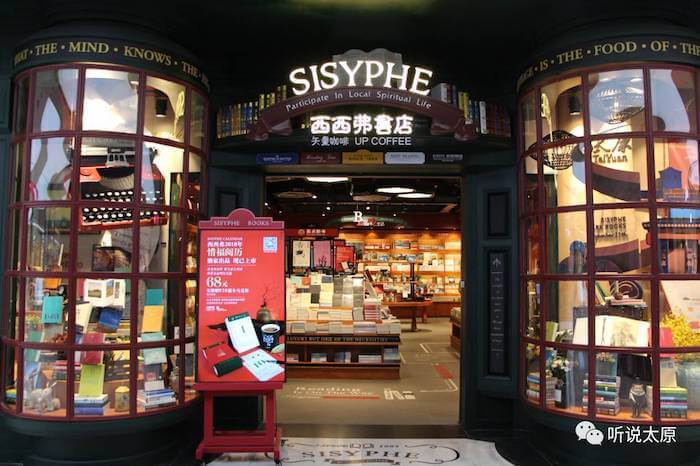
Sisyphe Books, originally from Zunyi City of Guizhou province in China, had opened 8 bookstores after 15 years of development. In the year 2008, Sisyphe opened the first 2.0 concept bookstore in Chongqing. It entered Shenzhen in the year 2013.
As of July 2018, Sisyphe had opened more than 140 chain bookstores in all provinces in the country except for Tibet, Xinjiang, and Inner Mongolia.
Sisyphe opened 3 new bookstores in 2013, 9 new bookstores in 2014, 20 new bookstores in 2015, 40 in the year 2016, and 51 in 2017. It plans to open 85 new bookstores in the year 2018.
Sisyphe is expanding rapidly and opening new bookstores at a faster rate. Moreover, Sisyphe has always been profitable. In 2017, Sisyphe has an annual turnover of 520 million yuan.
Jin Weizhu, Chairman of Sisyphe, sees that business and culture can be balanced with “experience”, and the operating system plays an important role in this.
Sisyphe had used 10 years to build its own operating system and processes. Currently, Sisyphe has 19 dedicated systems, more than 60 specialized departments, and approximate 100 verticals, providing solutions for finding locations for new bookstores, renovation, training store managers, and other daily operations. This had become the basis for the rapid replication and expansion of Sisyphe chain bookstores.
Sisyphe audience is different from the regular bookstores in China. The audience of Sisyphe Bookstore is the general crowd. They also aim to attract those that do not necessarily need or want to read and those that may or may not read. Therefore, Sisyphe put forward its theme as “Warm, rich, and manageable”.
The basic requirement for choosing locations of new stores is the customer flow. For Sisyphe, a daily entrance of 1,000 customers is the basic condition to meet.
At the same time, Sisyphe store area is not big, which is approximately 500 square meters for the standard store and 800 sqm for a bigger store. Smaller stores occupy lesser resources, which are more popular among the commercial community and easier for Sisyphe to manage the store and increase the revenue.
Mr. Jin Weizhu does not agree with the saying “selling books does not make money”. In his opinion, the precise positioning of the market enables Sisyphe to have high turnover rate; professional location determination enables Sisyphe to have high traffic flow; and, the brand influence and the industry characteristic enables Sisyphe to have a lower cost. These three together contributed to the profit of Sisyphe.
He believes that culture can bring business opportunity, and business can feedback to the culture. Finding a balance between the two is not sufficient as it is hard to realize the balance without a proper operating system. However, such an operating system is very rare in this industry because the most difficult part in retail is trivial, complicated, and details of the operation.
The team is continuously building and improving the operating system. Currently, Sisyphe has 18 professional systems; and, each system has at least 3 professional departments. The headquarter has 300 employees working in the back office.
Jin Weizhu prefers to solve the problem by tackling the root cause. Books are non-intuitive products, and SKUs are very dense. This is different from the departmental stores and general retails. Hence, it can’t be defined with just data, but to be supported with thinking. They understand the importance of using data to control, but it should be from various dimension and attributes.
Sisyphe is developing a new version of ERP. The development team has more than 20 internal employees. They are also working with limited outsource team. The most difficult part is not to develop but to meet the requirement as it is a critical factor.
A lot of investors that proposed to fund Sisyphe to replicate the chain stores more effectively were rejected. Jin Weizhu believes that the operating system can’t support such scale at the moment and wish to develop the business in a stable manner.
Sisyphe has realized an average of 12 thousand yuan sales per square meters and an inventory turnover of 1.7. Jin Weizhu also requires each store to achieve profitability in one or two years. The two new stores recently achieved 60 thousand yuan revenues on the first day of opening. The main reason for the profit is customer traffic. However, this factor is not commonly explored by the general bookstores.
Sisyphe chain bookstores are present in more than 50 cities with uneven economic and consumption power, and yet achieving the average annual sales of 12 thousand yuan per square meters.
This article is an excerpt of CIW eBook: Secrets of Sysphe Books.
Also read: China’s supermarkets aim to become the 3rd social space